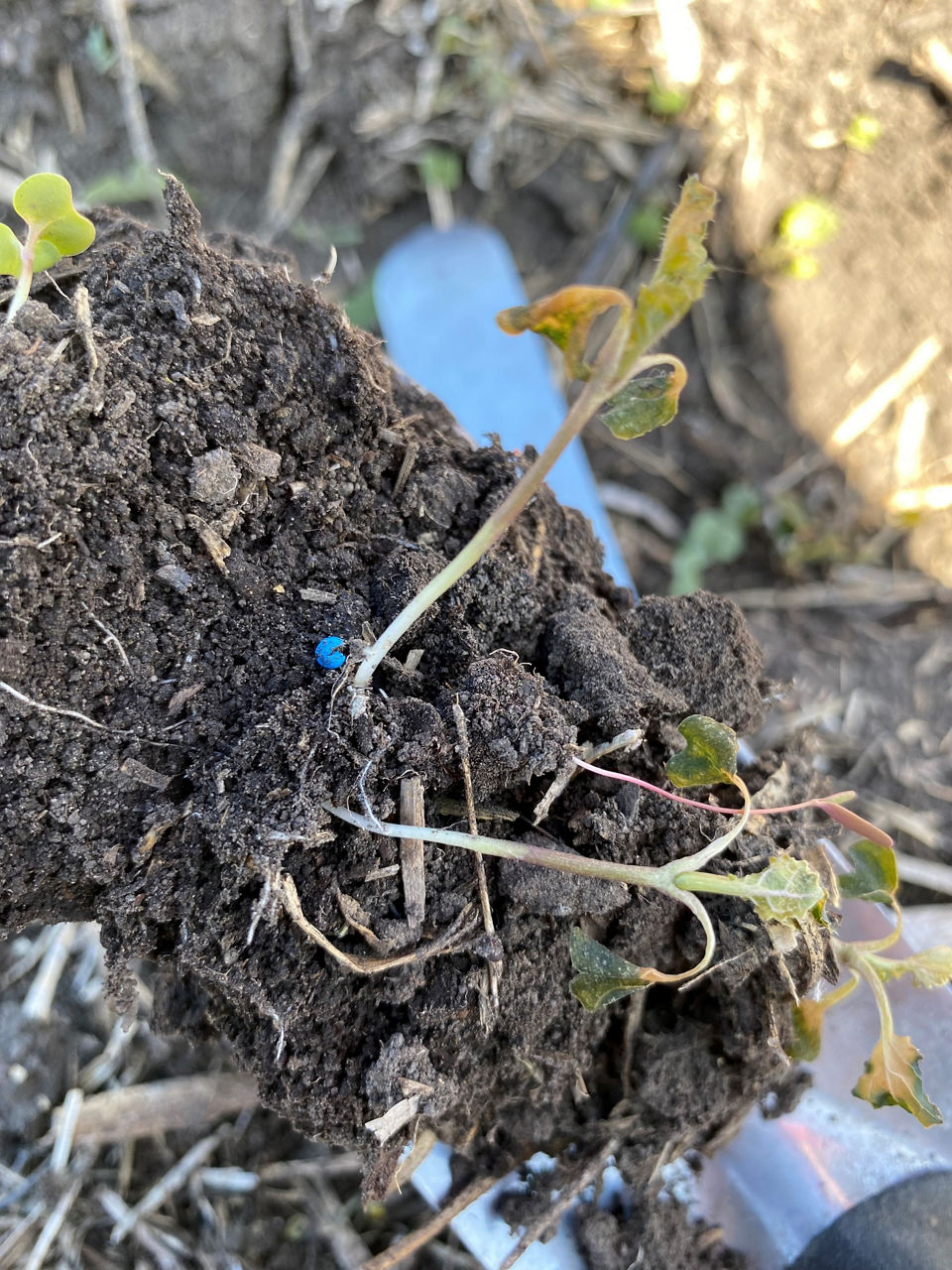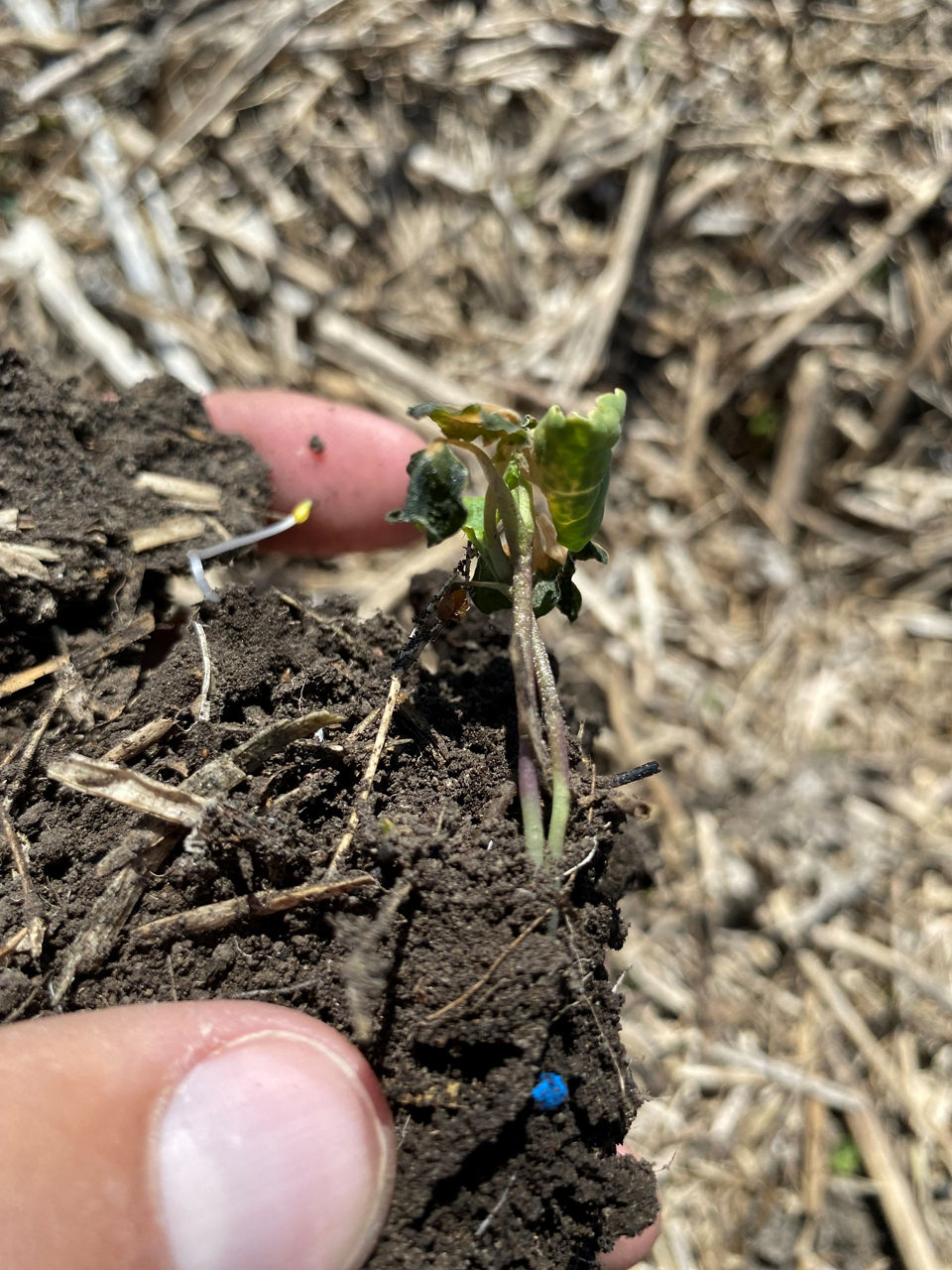Impact of Frost on Young Canola
May 21, 2024
Frost is a common concern for farmers in western Canada and Northern US each spring. Understanding the effects of cooler weather conditions on different growth stages can help determine the best management options.
In general, due to the insulating properties of the crop residue, fields with heavy crop residue in zero or minimum tillage systems may be more susceptible to frost damage because less heat is radiated from the soil. Fields with bare soil exposed may be better protected from frost damage for short periods of time. Additionally, sandy soils, do not retain heat as well as heavier soils and may be more prone to frost injury.
The Impact of Cold Weather
To accurately assess the extent of frost damage in canola, patience is key. Wait three to four days before field scouting. Because the growing point of canola is above the ground, there can be an increased threat of injury from frost. When scouting, make sure to check the growing point for signs of recovery. Although the cotyledons may not recover, the growing point may still be viable. The following factors influence the extent of frost damage on canola:
- Temperature – generally, canola starts to show frost injury symptoms starting at -3°C (27 °F).1 Temperatures warmer than this usually do not cause significant damage.
- Duration of frost – the longer the period of time that freezing temperatures occur, there is a greater the chance of crop injury.
- Weather conditions prior to frost – there is a greater chance of injury to canola if the weather conditions were warm prior to the frost. In cool spring conditions, the plant has a chance to acclimatize, so the frost is not as shocking to the plants. Cloud cover during the day and open skies at night can also increase injury.
- Flea beetle pressure – If flea beetles have removed large amounts of leaf material, canola will have a more difficult time recovering from frost injury. Feeding by flea beetles can be heavy after a frost; therefore, scouting for flea beetles becomes more important.
- Field conditions – frost injury can be worse in fields with heavy crop residue because the soil does not absorb as much of the sun’s heat compared to bare fields. Heavier soils retain heat better than sandy soils. Sandy soils are also that are lighter in color; therefore, tend to reflect more sunlight rather than absorb it in the form of heat.3
- Location in the field – injury from frost can be worse in low-lying areas and near tree lines.


Management – The Replant Decision
Reseeding canola after a frost may not be worth the time and resources that would be required. There are several key factors to consider in this decision, including:
- Plant stand – The ideal density for canola is five to eight plants per square foot (fifty to eighty plants per square meter).2 However, without any competition from weeds or insects, and under ideal growing conditions, leaving a stand with as little as two to four plants per square foot (twenty to forty plants per square meter) is often economically better than reseeding. Keep in mind that a lighter plant stand will require careful management to reach maximum yield potential.
- A thinner plant stand will induce more branching as the plant grows through that stage, which will delay maturity. However, they will still mature earlier than if the crop is re-seeded.4
- Uniformity of injury – Frost injury is rarely uniform across the field. Assess the size of injured areas. Small areas of frost damage are not worth reseeding and weed control should be a priority.
- Consider the time of year – is it too late in the spring to reseed canola? Does it make sense economically to reseed to another crop type? Will fall frost be the next problem to contend with? Is the soil still moist enough to reseed?
Weed Control following a Frost
Frost also has an effect on the weeds present and growing amongst the seeded crop. Weeds that are injured and stressed due to frost will be less susceptible to herbicide activity. Herbicides often work best when weeds are actively growing.
Ideal conditions for applying herbicides after a frost:1
- One or two nights with a minimum of 5°C (41 °F)
- A minimum of one day of warm and sunny growing conditions
- Warm and sunny conditions at time of herbicide application
- No evidence of blackening or water-soaked appearance (frost damage) on the crop or the weeds
It is important to note that herbicide tolerant crops should be healthy and growing (strong metabolism) to effectively process the selected herbicide and prevent injury.1
Summary
Although some of your crop may be damaged by frost, it takes careful consideration to decide on the viability of reseeding. Field scouting and consulting with your local DEKALB® brand Agronomist can assist in this decision-making process.
Sources:
1Environmental effects: Frost. 2023. Canola Encyclopedia. https://www.canolacouncil.org/canola-encyclopedia/plant-establishment/environmental-effects/#frost
2Plant populations. 2023. Canola Encyclopedia. https://www.canolacouncil.org/canola-encyclopedia/plant-establishment/plant-populations/#:~:text=The%20recommendation%20is%20to%20target,water%2C%20insects%2C%20weed%20competition%20or
3Crassweller, R. 2024. Frost, Critical Temperatures, and Frost Protection. Pennsylvania State University Extension. https://extension.psu.edu/frost-critical-temperatures-and-frost-protection
4Spring Frost Damage. 2024. Manitoba Government. https://www.gov.mb.ca/agriculture/crops/crop-management/spring-frost-damage-bulletin.html
2014_390800
You may also like...
Here are some articles that may also be of interest to you